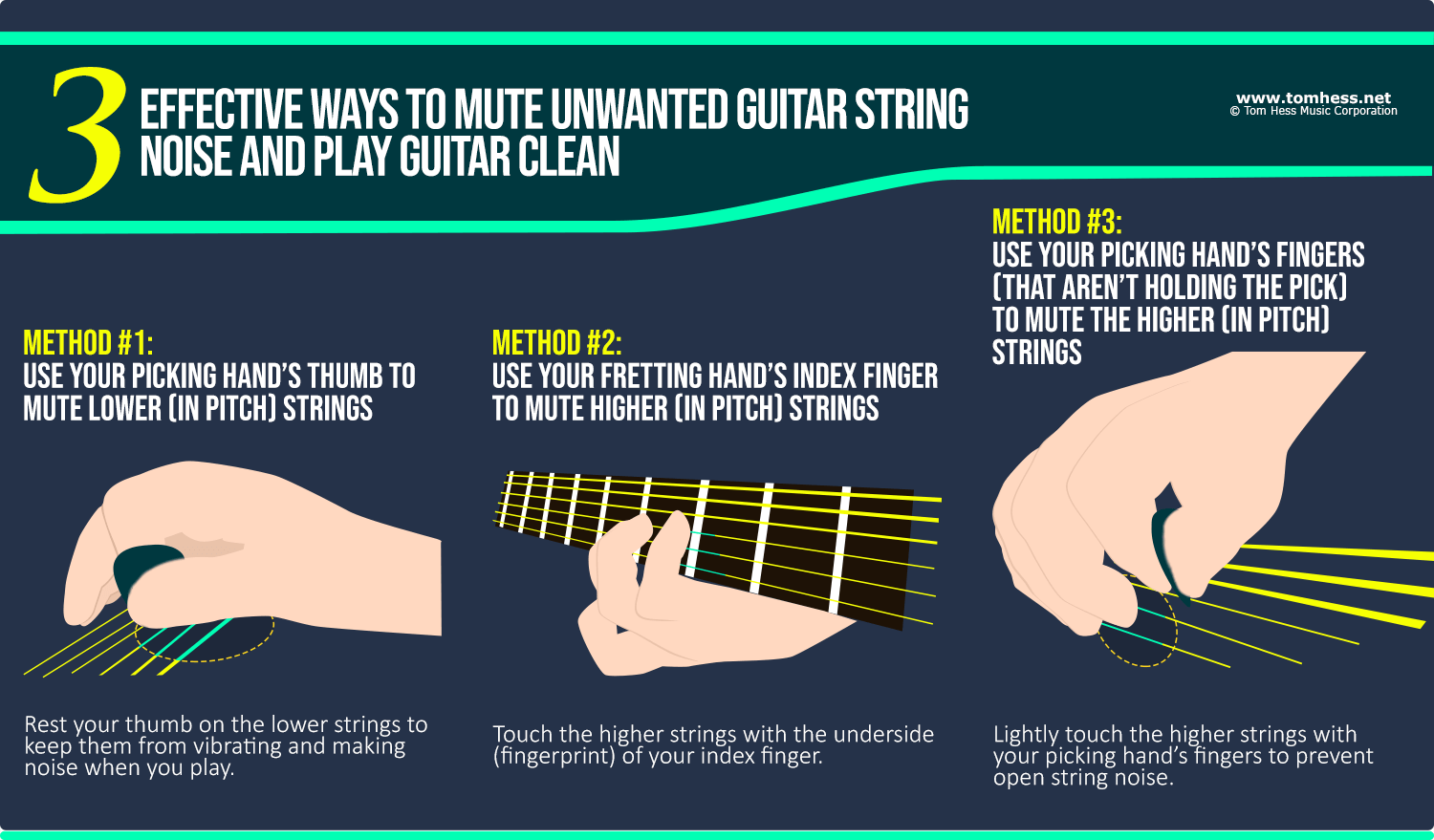Use These Lydian Guitar Licks In Your Next Rock Guitar Solo
Feel Incredibly Easy

EMAIL TO GET ACCESS
By submitting your info, you agree to send it to Tom Hess Music Corporation who will process and use it according to their privacy policy.
If you love the amazing, floating, dreamy and exotic sound of guitar players like Steve Vai and Joe Satriani…
… you’ll love the guitar licks in this article.
That’s because they are based on the scale both Vai and Satriani use often in their rock guitar solos.
That scale is called:
The Lydian scale.
I’ll show you some of my favorite Lydian scale guitar licks that will easily spice up any rock guitar solo you play.
And after I show you these guitar licks from the Lydian scale…
I’ll also teach you how to make any guitar lick you play sound great and exotic on command.
Feel Incredibly Easy

EMAIL TO GET ACCESS
By submitting your info, you agree to send it to Tom Hess Music Corporation who will process and use it according to their privacy policy.
(These tips help you develop a lead guitar style that’s uniquely your own.)
Ready?
Let’s begin.
First, watch the video below where I show you the Lydian scale guitar licks I promised to teach you:
Now that you are more familiar with the Lydian scale and guitar licks you can play using it…
Here are a few other ways to make your guitar licks sound more exotic and create guitar solos you can feel proud to call your own:
Rock Lead Guitar Tip #1. Learn The Lydian Scale All Over The Guitar
The #1 mistake guitar players make when learning a new scale (like the Lydian scale) is…
Only learning it in one area of the guitar fretboard.
Most think they are “done” learning the scale once they can play its notes in one position.
This is not only wrong… it is also limits your lead guitar playing and makes it harder to create guitar licks.
In the case of the Lydian scale, there are 7 notes.
And you can play the Lydian scale from each of these 7 notes on guitar.
That means, there are 7 Lydian scale fingerings for you to learn and practice.
For help with memorizing the Lydian scale all over your guitar (and create guitar licks from it), check out this video by Guitar Practice Expert Mike Philippov.
Pay attention to the principles Mike lays out in his video. They apply to all scales you ever learn on guitar (not just the Lydian scale).
Watch the video below:
Bonus tip:
Practice improvising guitar licks and guitar solos in the shapes of the scale you’re least familiar with. This means: intentionally restrict yourself from playing in the shapes you already know well.
It’ll feel harder to solo at first, but as the unfamiliar shapes start to feel easy, you’ll gain a whole lot of musical freedom to solo all over the guitar.
Also, create sequences from scale patterns. Sequences make practicing scales feel way more fun. Plus, they challenge your guitar technique, 2-hand synchronization and fretboard visualization.
With this video to see how to easily create sequenced guitar licks:
Rock Lead Guitar Tip #2. Learn Other Exotic Scales And Start Using Them In your Guitar Solos
The Lydian scale is just one of many exotic scales you can use to write cool guitar licks (and guitar solos).
Another one of my favorite scales is: the 5th mode of melodic minor.
Also known as: Mixolydian b6.
That scale drips with so much emotion, it’s almost impossible to play lead guitar licks from it without triggering feelings of longing, sadness or melancholy in your lead guitar playing.
Here is a video that shows how to use that scale in your lead guitar playing:
Question: “Tom Hess, which guitar scale is better for making my guitar licks sound exotic? The Lydian scale or Mixolydian b6?”
Answer: there is no such thing as “better” when it comes to guitar scales. The Lydian scale is no better or worse than the Mixolydian b6 scale – it’s just different.
The Lydian scale has a very cool dreamy and floating feel. And that makes the Lydian scale the ideal choice for guitar licks and guitar solos that require that feeling.
Mixolydian b6 scale is (in my opinion) the most emotional and melancholic guitar scale. So, I use it (instead of the Lydian scale) in guitar licks and guitar solos that require that feel.
Rock Lead Guitar Tip #3. Use Different Articulation Techniques For Notes In Your Guitar Licks And Guitar Solos.
One of the reasons many lead guitar players struggle to make their guitar licks sound exotic is…
They articulate the notes in their lead guitar licks in the same way. Most guitarist simply pick the notes using upstrokes and downstrokes.
Others add a bit of (basic) vibrato and string bends. A few also think to use slides and hammer ons and pull offs.
But that’s where it ends.
And if that is all you do to articulate the notes you play, you’ll have a very hard time making your guitar licks sound exotic, no matter if you use the Lydian scale or any other scale.
That’s a damn shame.
Because the guitar is quite possibly the most expressive instrument in the world when it comes to articulation.
And the more variety you can add into your lead guitar licks, the more exotic your guitar solos become.
Take a look at this exotic guitar licks video to see what I mean:
(By the way, many of the guitar licks used in the video above are from the Lydian scale. You may recognize its unique sound.)
Here are a few specific lead guitar articulation techniques you can put into the guitar licks you play in your next guitar solo (they sound great with the Lydian scale specifically):
Lead Guitar Slide variations, including:
- Ascending and Descending slides. As the name implies – an ascending slide happens when you slide up to a higher note from a lower note. (The descending slide is the reverse of that.)
- Backslides.
A backslide is a guitar solo phrasing trick that consists of 3 steps:
1. You play a note in your guitar solo
2. You slide away from that note (up or down), to add guitar phrasing to it.
3. You slide back to the note you started from and continue playing the next guitar lick in your guitar solo.
And no, backslides are NOT the same guitar solo phrasing element as "descending slides". A descending slide happens when you slide to any note from a higher pitch.
Descending slides don't have 3 parts like backslides do.
Backslides are easier to demonstrate (and play) than they are to explain…
...so here is a lead guitar solo lesson video showing you how to do backslides with many examples:
- Rearticulation slides. “Rearticulation” is just a fancy term for playing something again. To play a rearticulation slide, you play a note and then rearticulate that same note by sliding into it. It’s easy to play and it sounds very cool.
- Super slides. These are slides of one octave or more. You can sometimes rearticulate the same note by doing a super slide into it.
Next on the list of lead guitar articulation techniques, we have:
Vibrato variations
Almost every guitar player knows about vibrato… but most guitar players make a few common mistakes when they add vibrato to their guitar licks and guitar solos:
Mistake #1: their vibrato is too fast and too narrow. This makes their guitar playing sound very nervous and definitely NOT exotic. And even using exotic rock lead guitar scales (like the Lydian scale) doesn't solve the problem.
The solution here is to make your vibrato wider (more on how to do this below).
Mistake # 2: they use instant vibrato all the time. This is where you play a note and instantly add vibrato to it (like an opera singer).
This can sound good sometimes… but if you do vibrato this way all the time, it sounds boring. Especially in a rock context.
The solution is to use delayed vibrato.
Like the name implies – you play the note and delay the vibrato by about 1 second.
Then, when you do add vibrato – your guitar licks will sound a lot more dramatic and exotic.
And delayed vibrato sounds especially awesome, when you play guitar licks from the Lydian scale.
Watch this video to see how to get the controlled delayed vibrato I'm talking about:
Moving along – the next lead guitar articulation technique that makes your guitar licks more exotic is….
String bending variations
My favorite (and most exotic) string bending variation is what I call a “Marty bend”. I named this technique after one of my favorite guitar players: Marty Friedman.
The way it works is: you bend the string from a note NOT in the key to a note that IS in the key. (For example, bend from the note D# up to E in the key of A major when playing a guitar lick.)
This dissonance creates a very cool and exotic sound you don’t hear very often.
And it sounds particularly awesome when you play guitar licks and guitar solos using the Lydian scale.
But beyond Marty bends – there are many other string bending variations you can use in your guitar licks.
Check out this guitar licks video to see what they are:
Question: “Tom Hess, when I bend strings I hear a lot of string noise. What can I do?”
Answer: There are 3 basic ways to control excess string noise. The most important of these is thumb muting.
This means: rest your picking hand’s thumb on the lower (in pitch) strings to keep them quiet when you play lead guitar.
For example: say you are playing a guitar lick with a string bend on the 3rd string. Your thumb should cover strings 4 5 and 6 while you bend the 3rd guitar string.
As you change strings, the thumb should glide along and always cover the strings below the one you are playing. (This is true no matter which guitar string you are bending.)
Watch this video to see thumb muting in action and clean up your string bends:
The other 2 ways to mute string noise include: muting the higher in pitch strings (using your fretting hand’s index finger)…
… and muting the higher in pitch strings using the unused fingers of your picking hand. (These are the fingers not used to hold the pick.)

Pro tip: don’t mute string noise with the side of your picking hand. Why not? Answer: the side of your picking hand is not as reliable for muting string noise as thumb muting is.
With thumb muting, you get instant and unmistakable feedback that the (lower in pitch) strings are muted. with the side of your palm - you don’t.
Besides, with palm muting, your guitar pick is at rest away from the strings (with the pick outside the ‘string trench’ or the space between strings). With thumb muting, the pick is always at rest in the trenches of the strings.
This makes your lead guitar technique way more efficient and makes it easier to play guitar fast.
Question: "Tom Hess, what if I still have trouble doing guitar string bends in tune?"
Answer: Detune your guitar by a half step or a whole step (or more)... then practice all the guitar string bends you want. It won't be long before you start nailing string bends in all your guitar licks. Then you can tune your guitar back up to standard tuning and enjoy the improved sound of your lead guitar playing :)
Another way to get your bends in tune is this:
Play the note you intend to bend up to as a regular (unbent) note. This gets its sound into your ear.
Then start doing the bend and stop when the note reaches the pitch you just played as an unbent pitch in the previous step.
Do this exercise for 5-10 minutes per day to train your ear and your hands to bend in tune.
As an aside, the above is an example of an exotic lead guitar phrasing ornament called: rearticulation bend. (It sounds great with guitar licks from the Lydian scale.)
Rock Lead Guitar Tip #4. Practice musical refinement
What is musical refinement?
It’s where you play a guitar lick (for example, one of the guitar licks from the Lydian scale I showed you in this guitar solo article)…
… and “grade” it on a scale of 1-10.
Where 10 is: “this guitar lick is the most awesome sound I can possibly hear right now” and 1 is… the most extreme opposite of that.
Your task, after you play the guitar lick, is to refine it and make it better.
One easy way to do this is to add phrasing ornaments to the notes (that I described throughout this article).
Simply add one of the vibrato and/or slide or string bend variations to the notes to bring your guitar lick to a “10”.
This guitar practice idea is one of the best ways to improve your lead guitar playing and play better guitar licks and guitar solos.
Watch this video to see what I mean:
Rock Lead Guitar Tip #5. Use Rubato To Make your Guitar Licks More Exotic.
Rubato is a little-known (and simple) technique that makes your guitar solos almost as unique to you as your fingerprints.
It has nothing to do with playing fast.
It has nothing to do with knowing a lot of scales.
(Or knowing a lot about music theory.)
It has nothing to do with your vibrato.
(As cool as vibrato is, it’s pretty easy to match someone’s vibrato… not so with this little-known technique.)
Yngwie, Jason Becker, Eddie Van Halen, Paul Gilbert, Steve Vai and others all use it in their solos.
And although it is simple, it’s very hard to do this technique the same way as someone else.
That’s why, when you start using it, you may hear others say:
“This totally sounds like you”
...the moment they hear your guitar solos.
Watch this video to see how to do rubato in your lead guitar playing:
To be clear: playing rubato is not an excuse for ‘not playing in time’.
To play rubato well, you need to have a great sense of musical timing. That is what allows you to stretch or compress the time as you see fit while playing guitar licks to sound more creative instead of ‘sloppy’ and out of control.
Here are some amazing musicians who use rubato well and the musical pieces to check out by them:
Chopin - the 24 preludes
Jason Becker - virtually every tune from the Perpetual Burn album.
Michael Romeo (from Symphony X) - Sea Of Lies from Divine Wings Of Tragedy
Now that you know how to make your lead guitar playing more exotic using the Lydian scale, what’s next?
The next step is to transform the rest of your guitar playing – starting with your fretting hand.
If you want to build more guitar speed with your fretting hand, you’ll love my new free eGuide called: mastering fretting hand finger independence for guitar players. It’s free and it shows you easy ways to build a lot of guitar speed in your fretting hand without a lot of practice. Download your copy today and discover guitar speed secrets few guitarists will know.

TO EFFORTLESS FINGER
INDEPENDENCE FOR
YOUR FRETTING HAND

Want to improve your guitar playing fast? Get some help with the best guitar instruction online.

